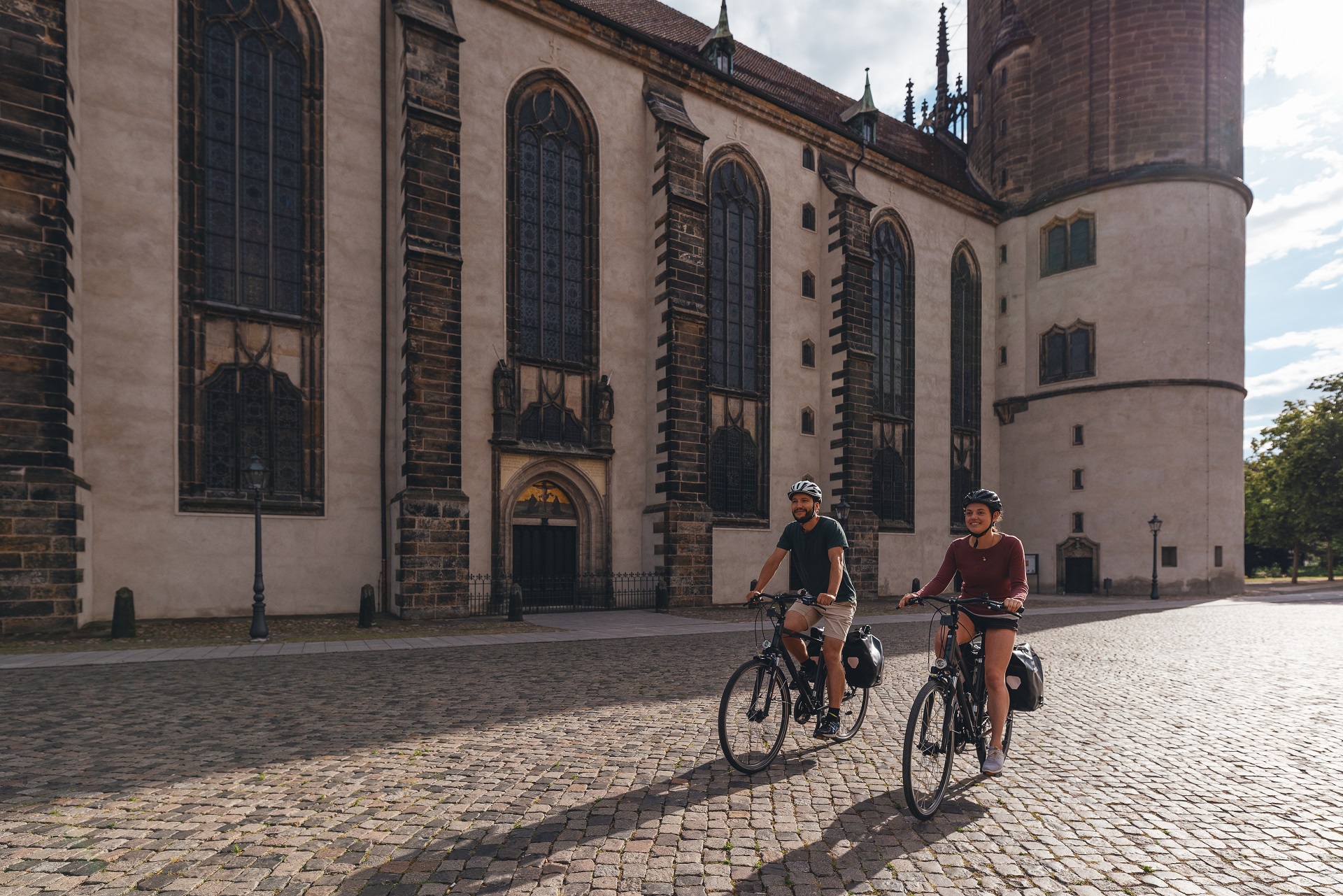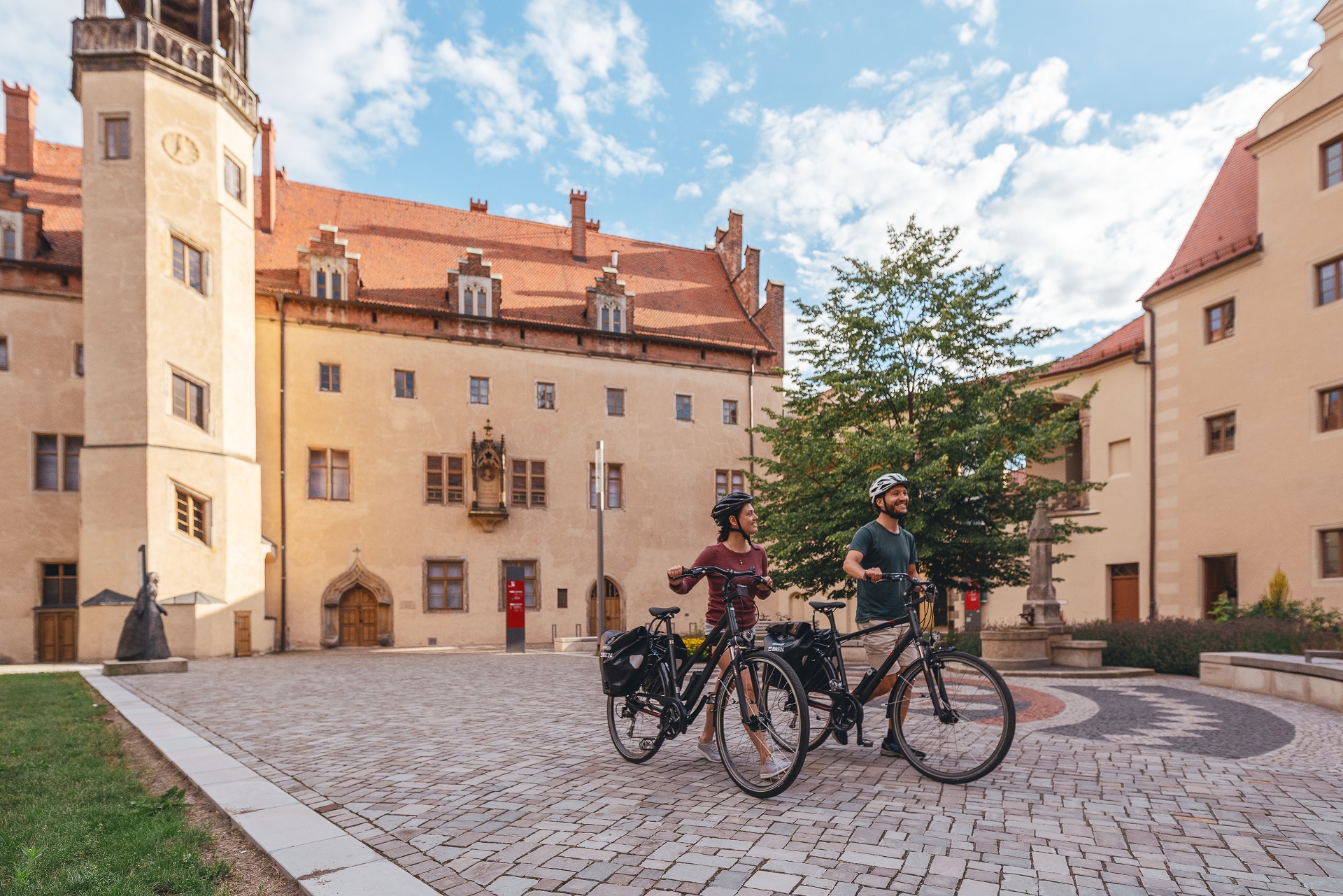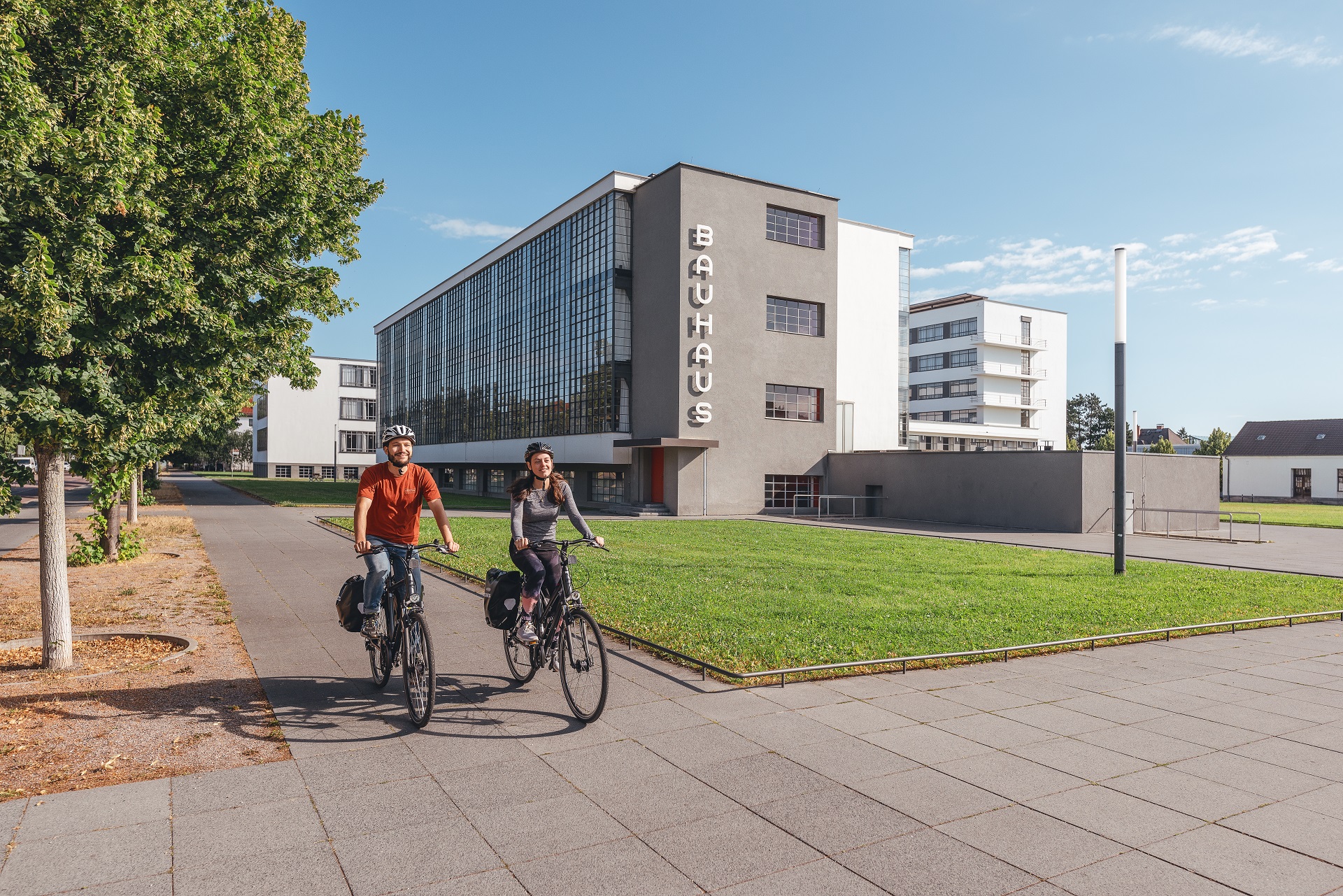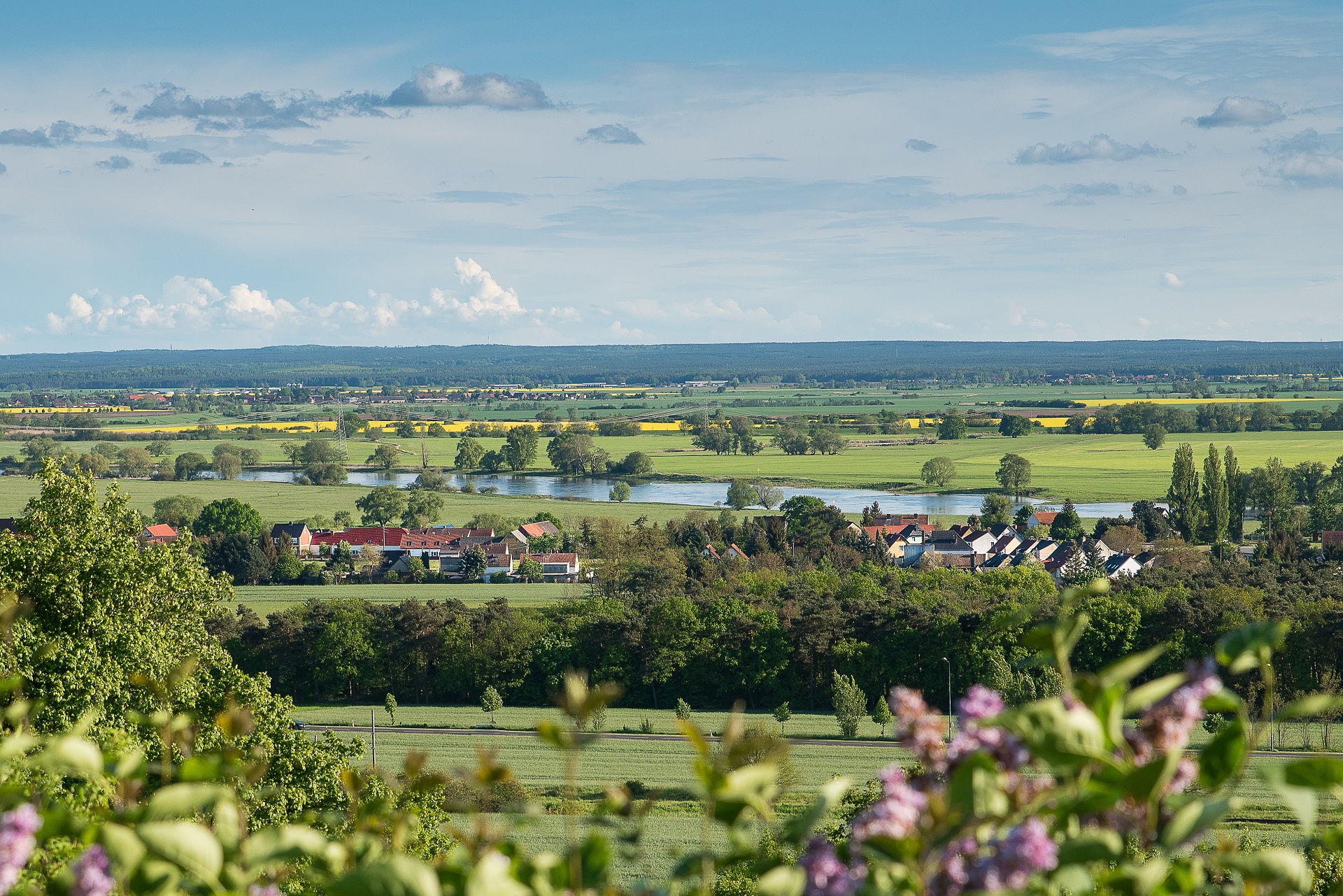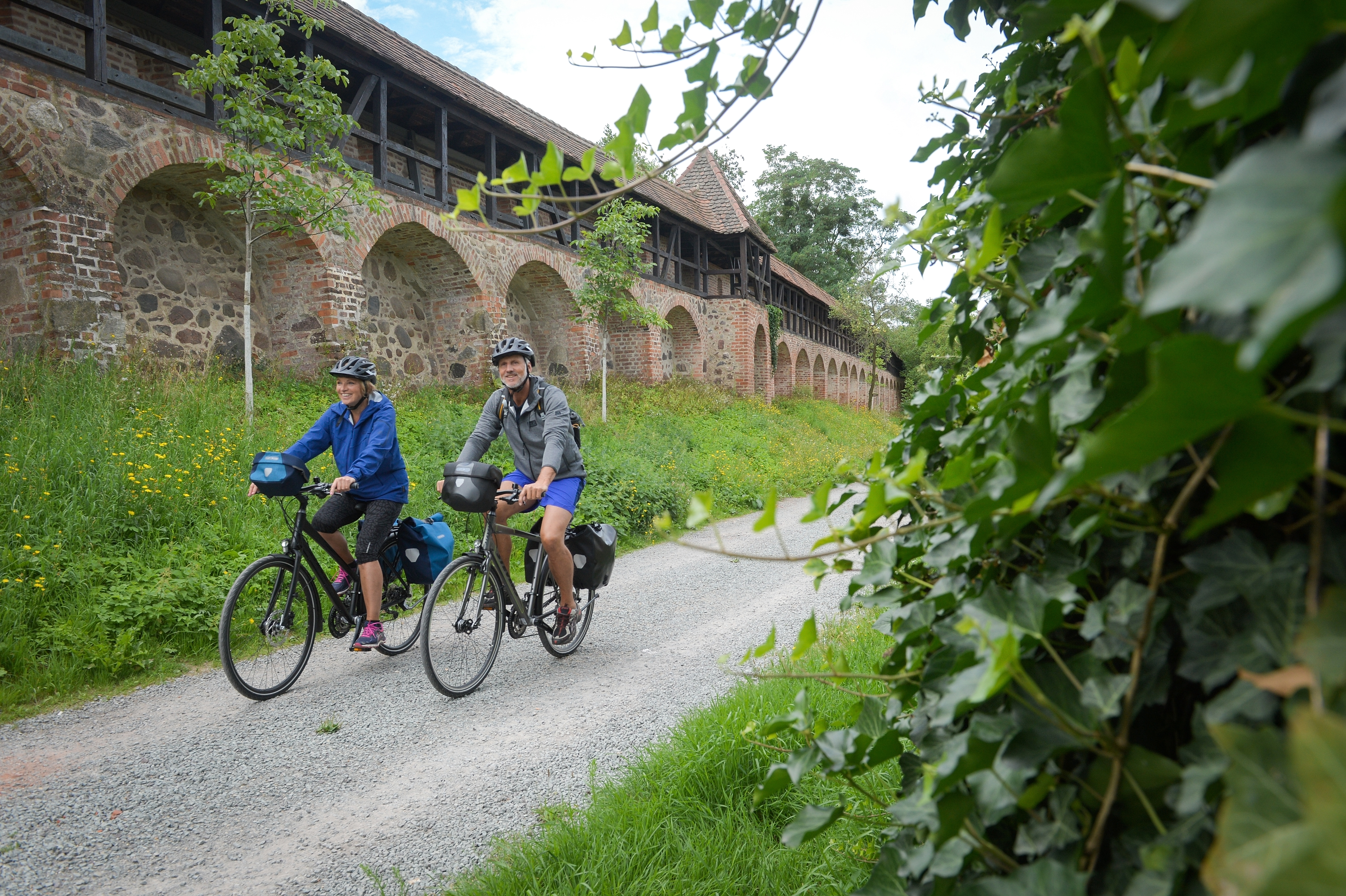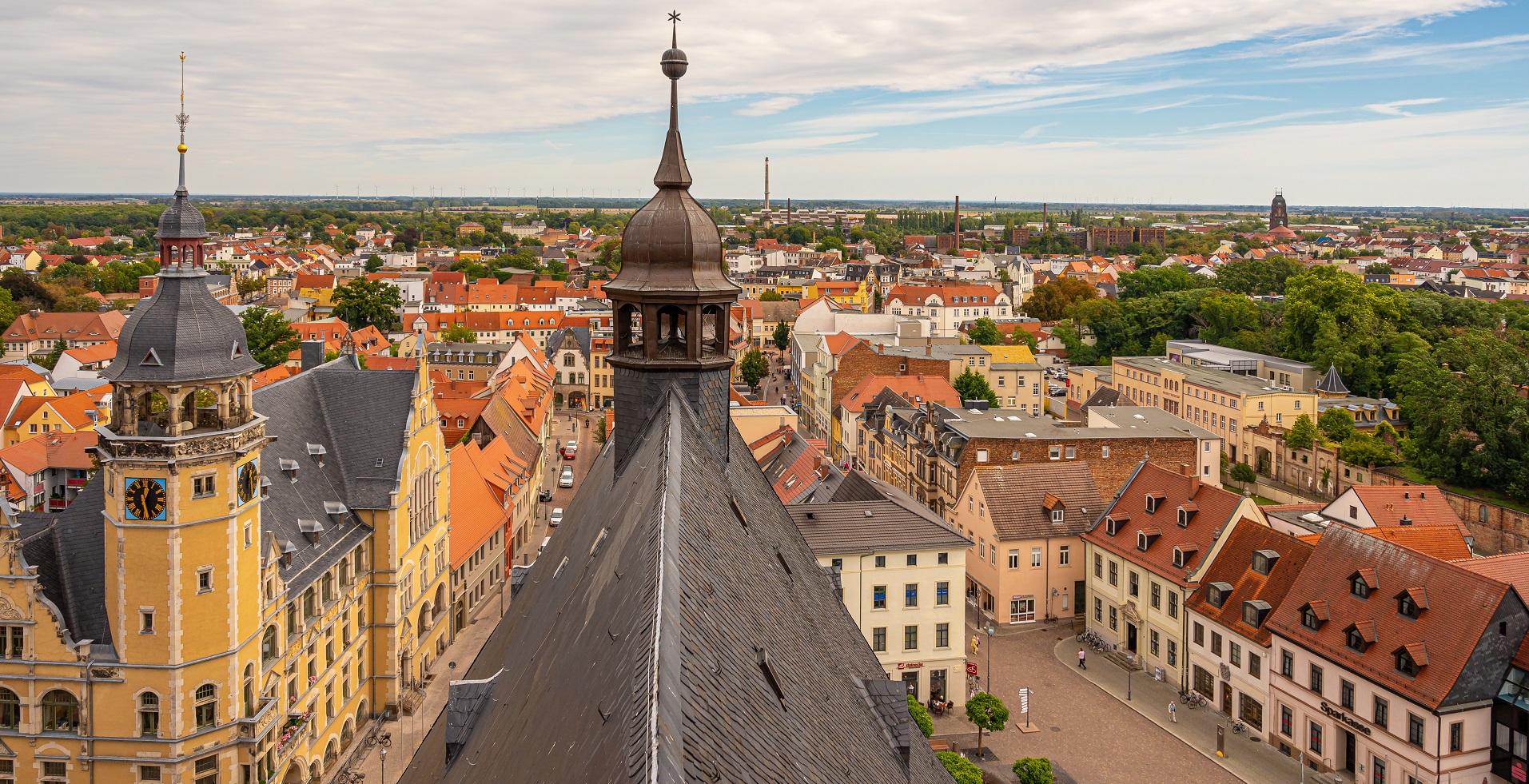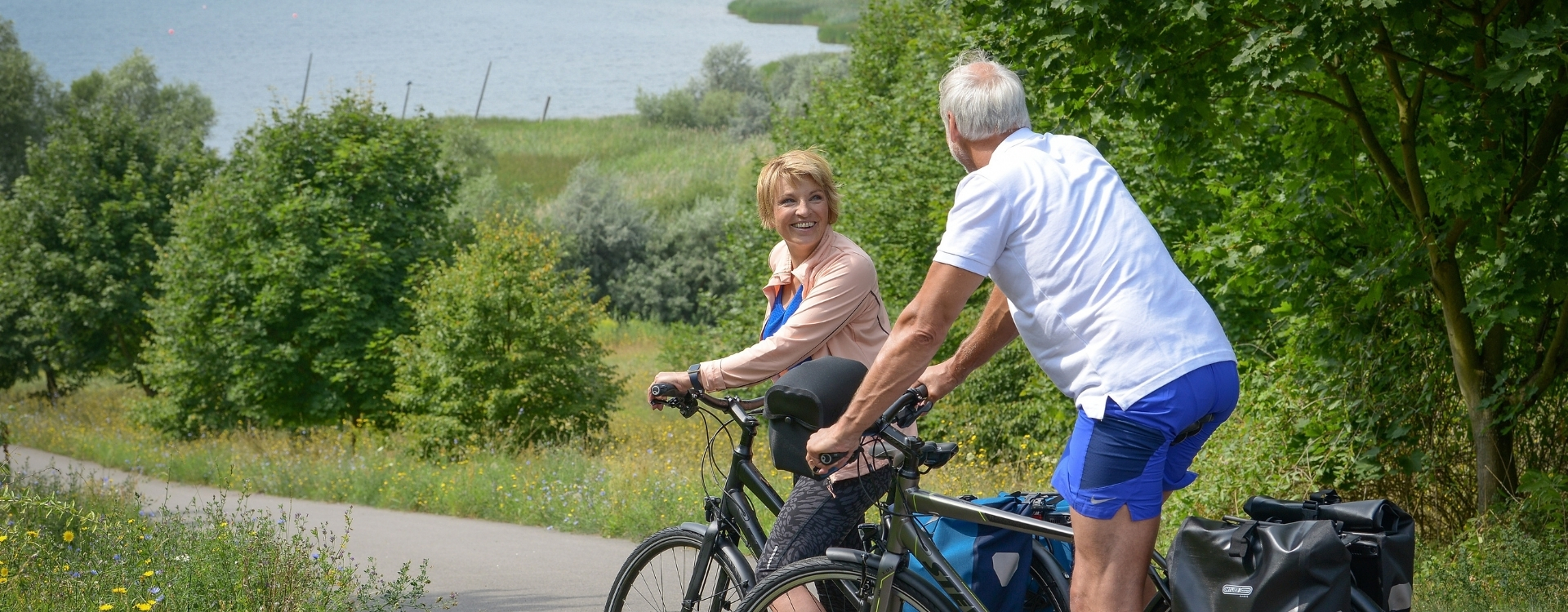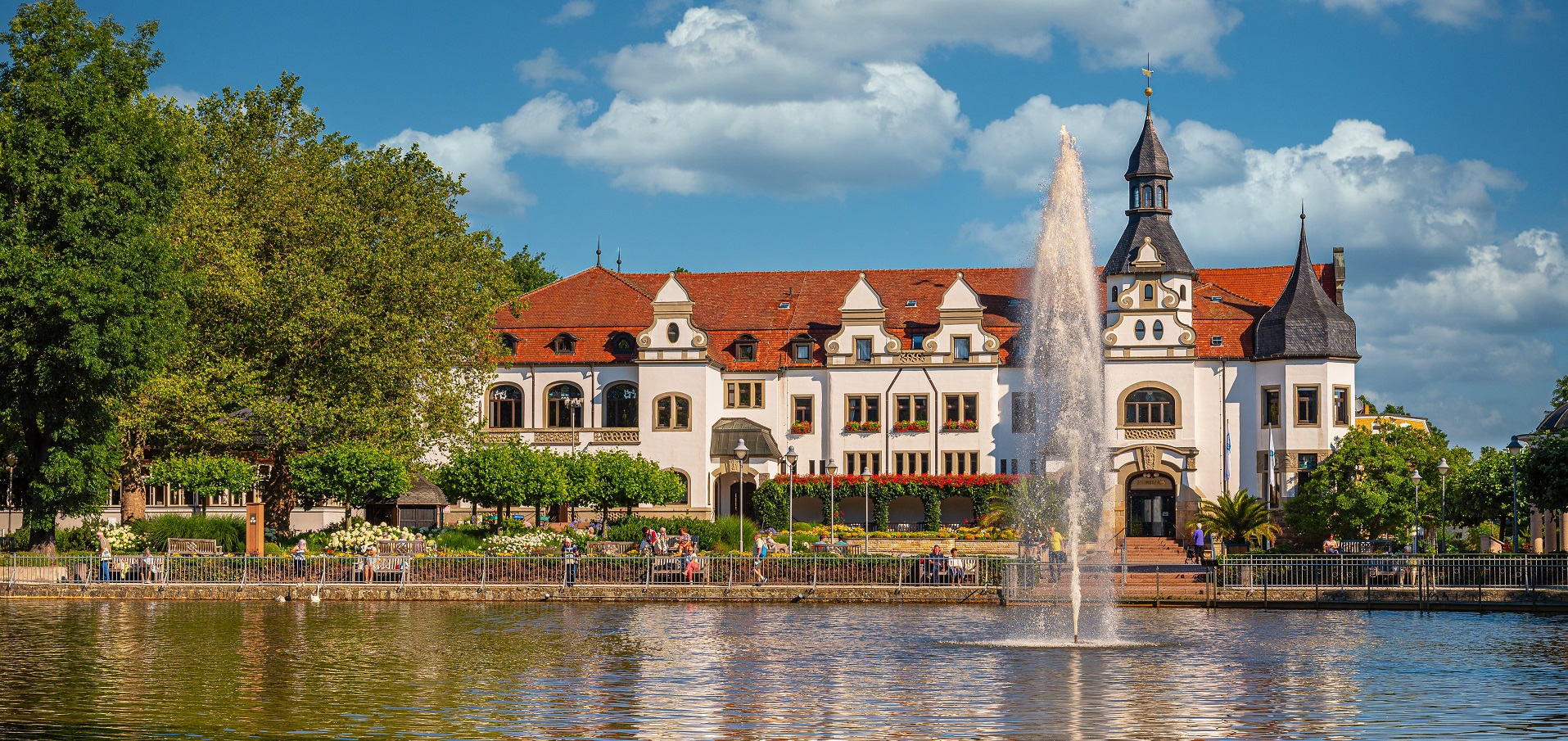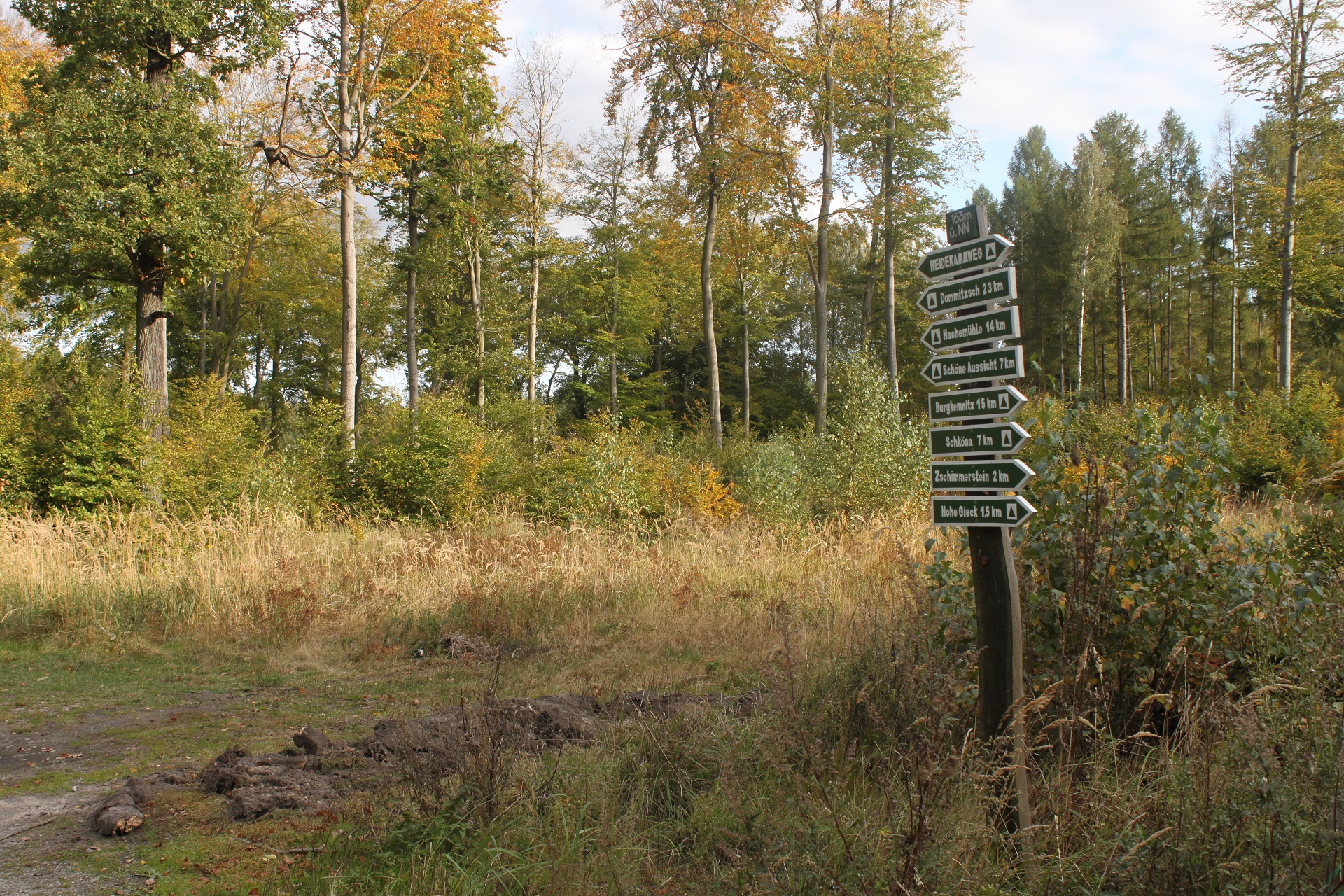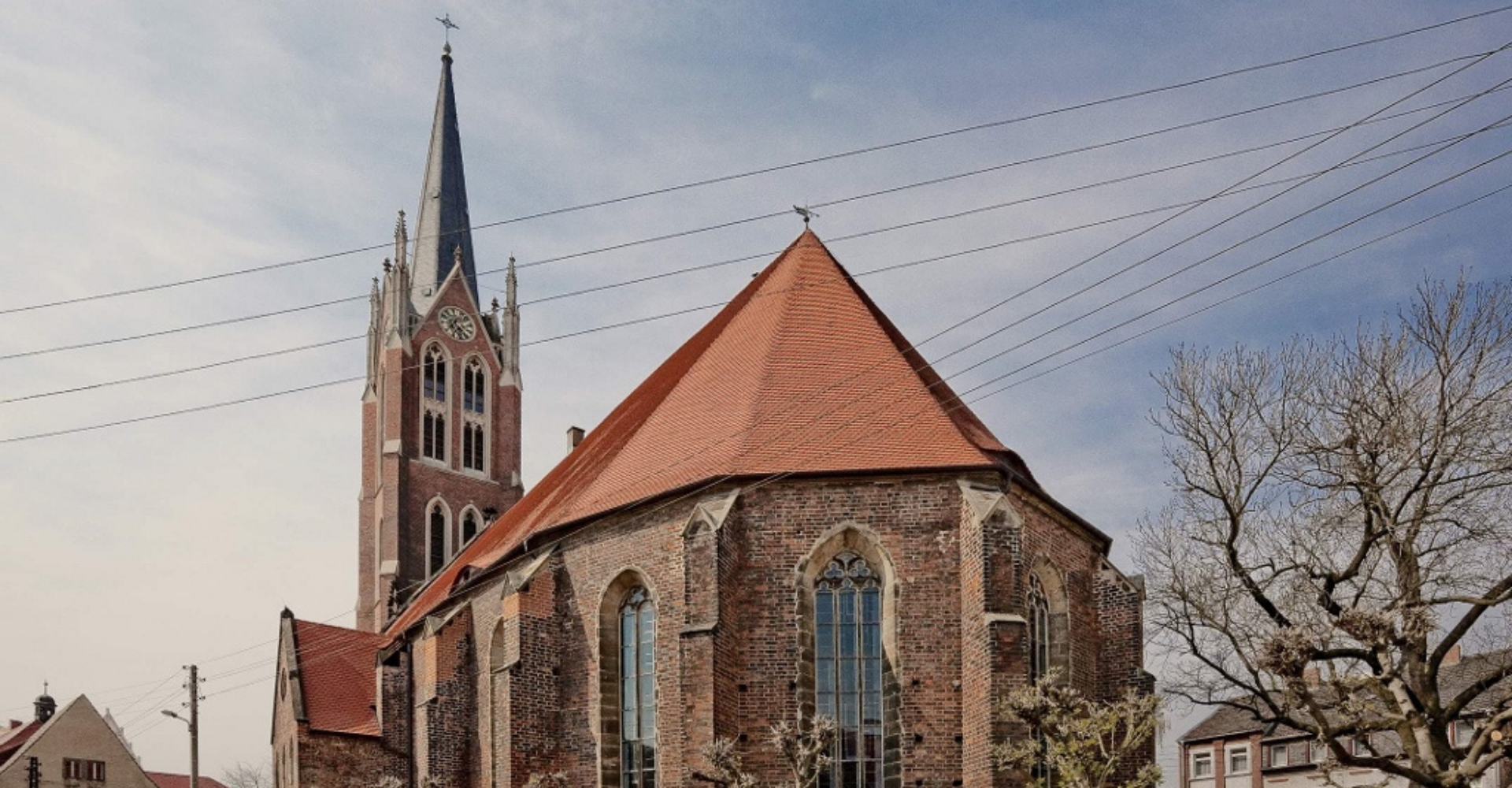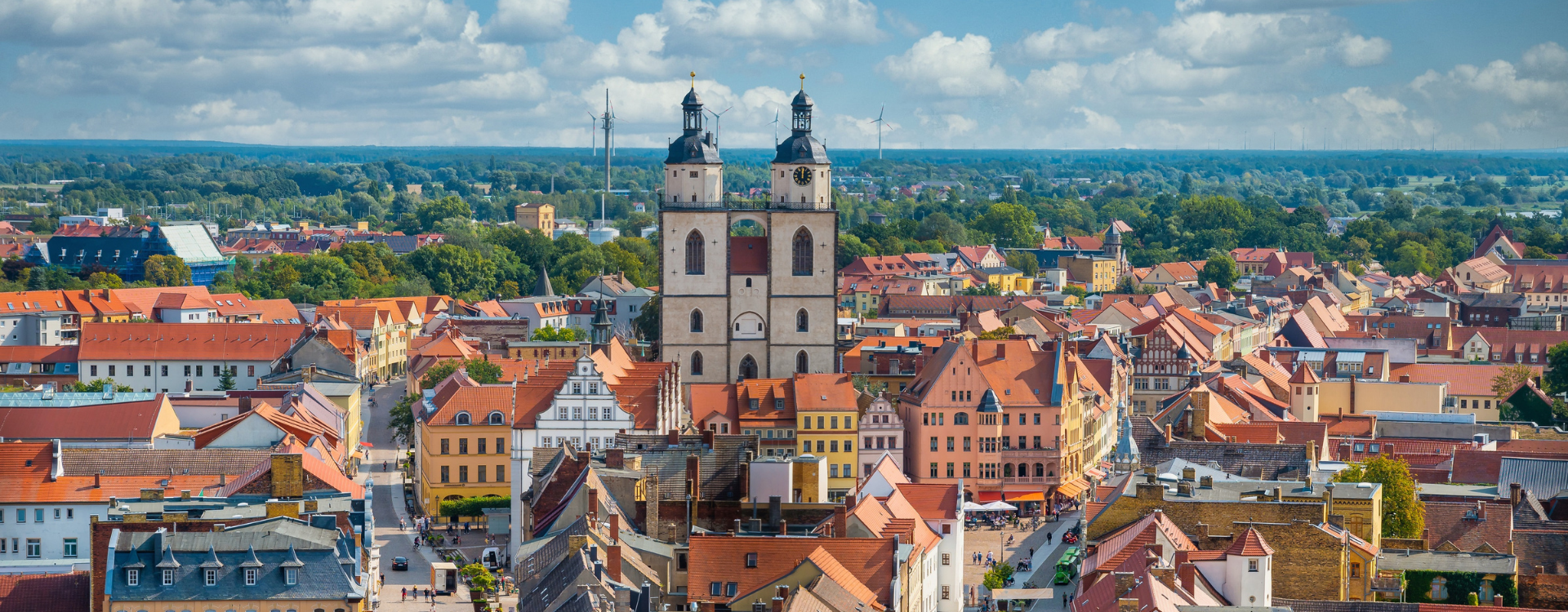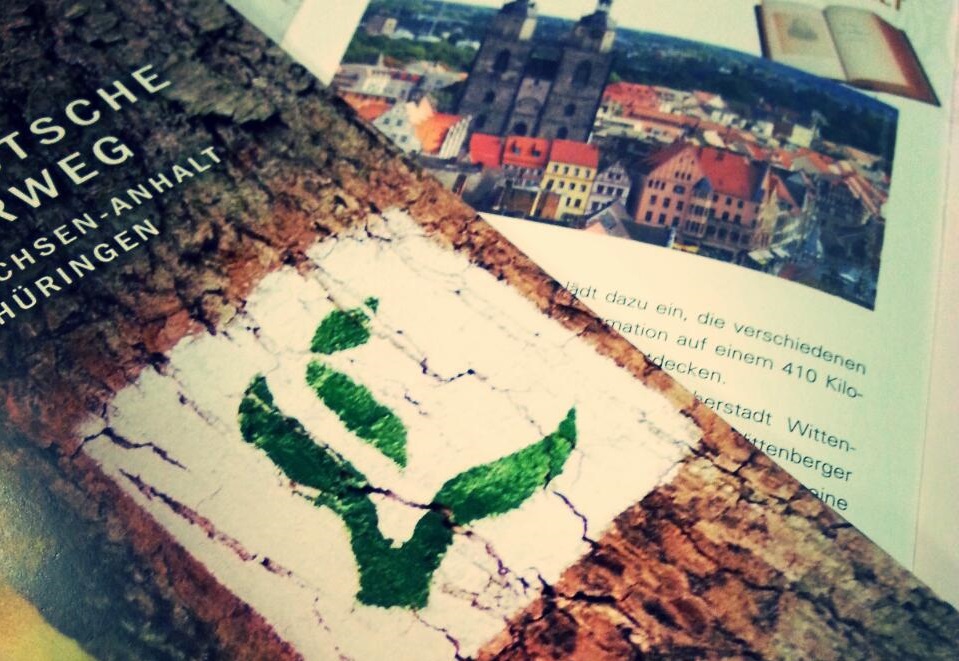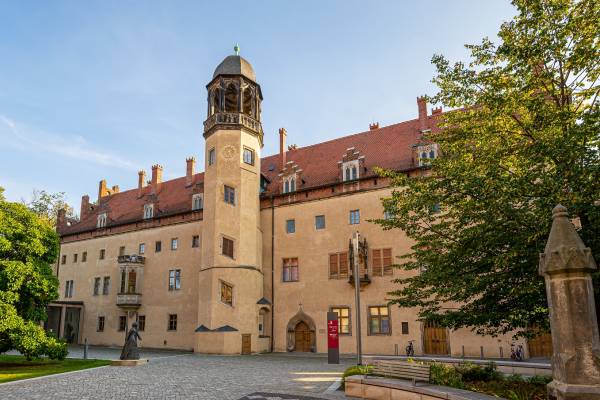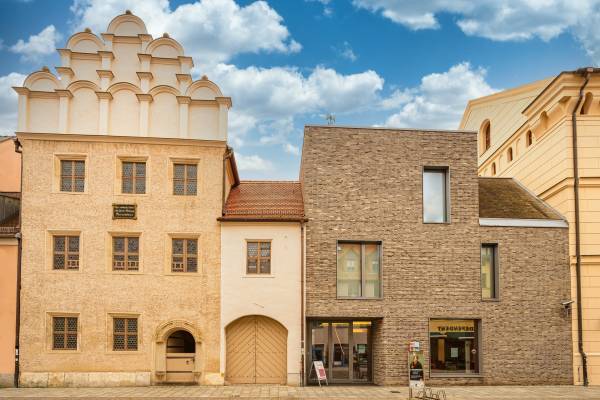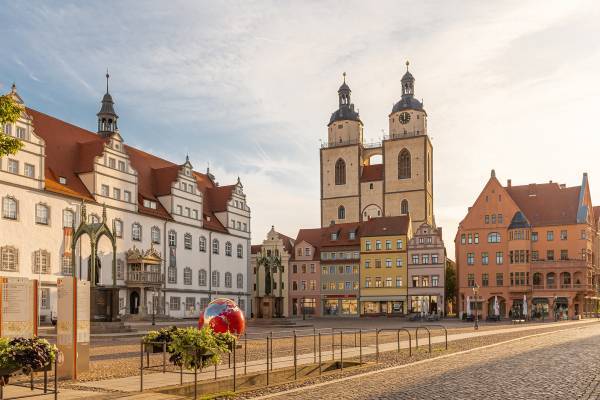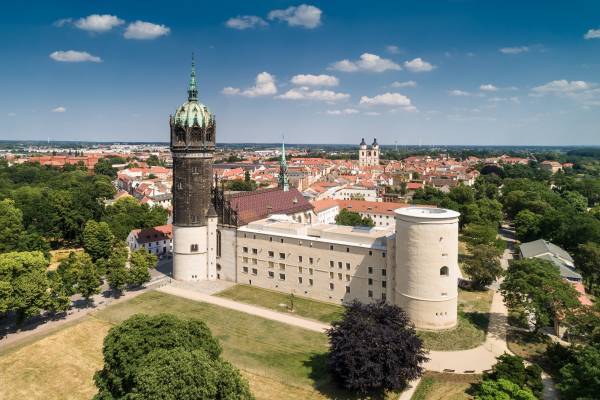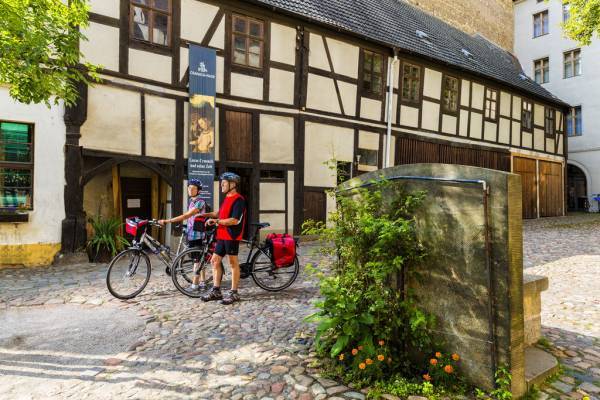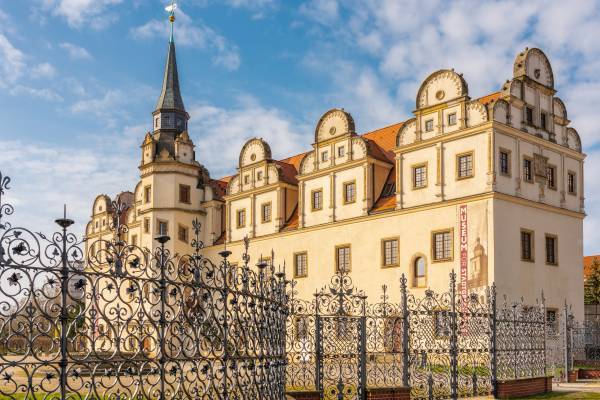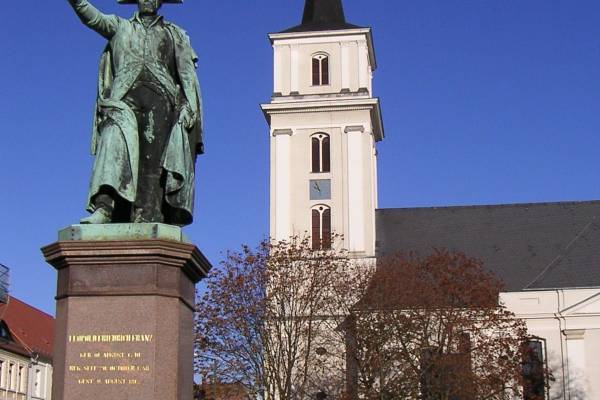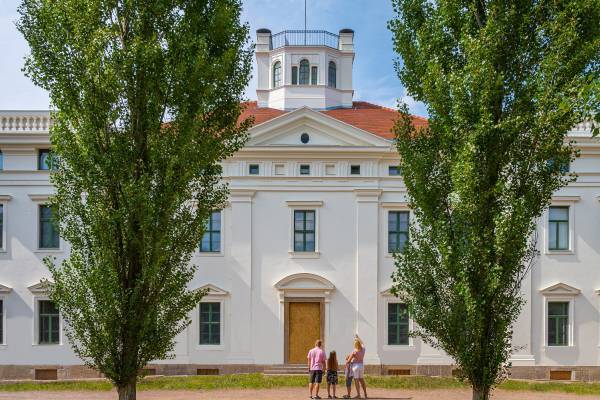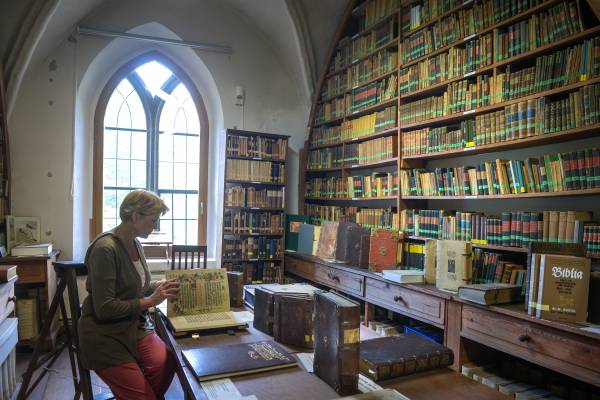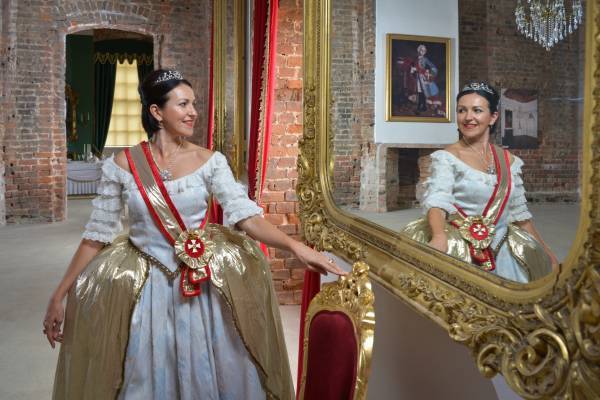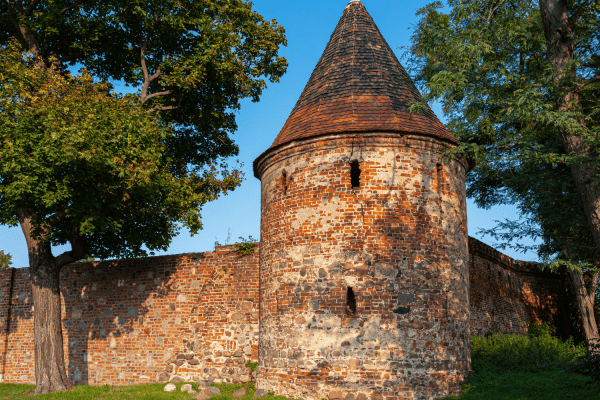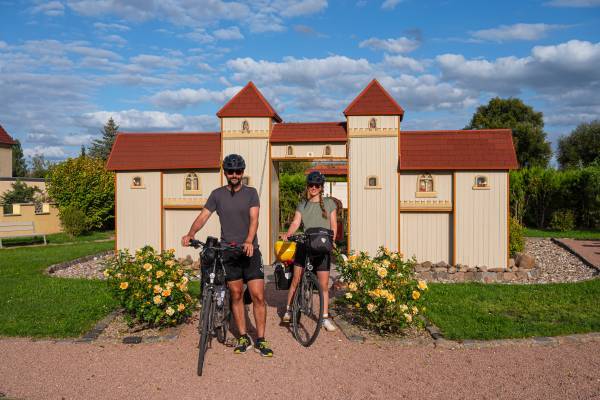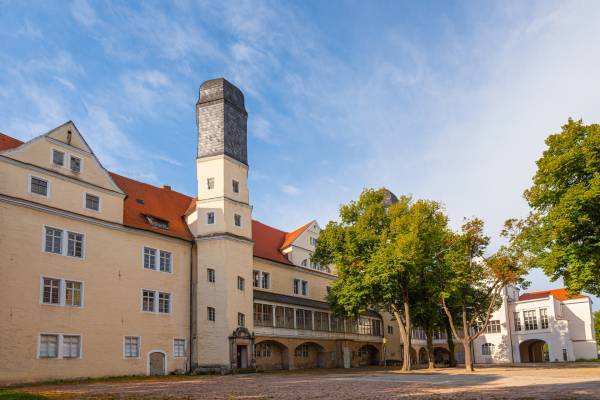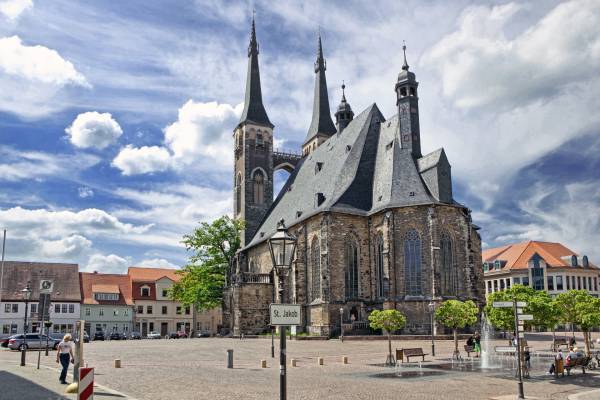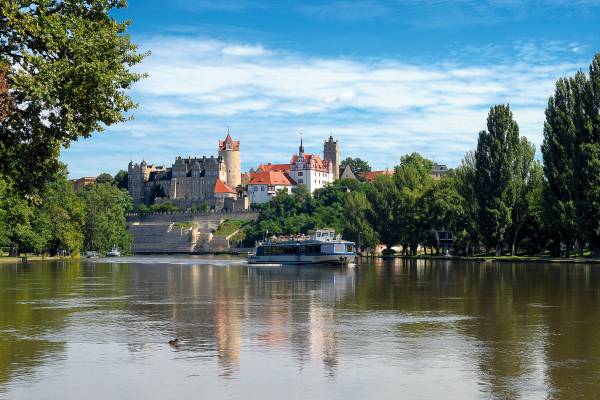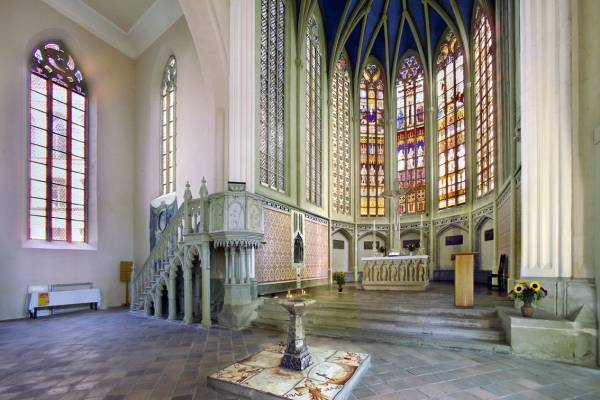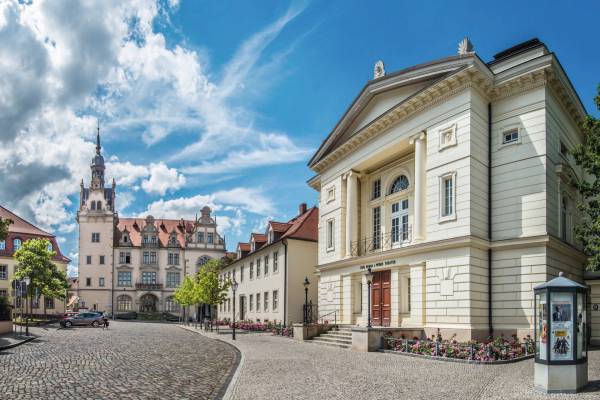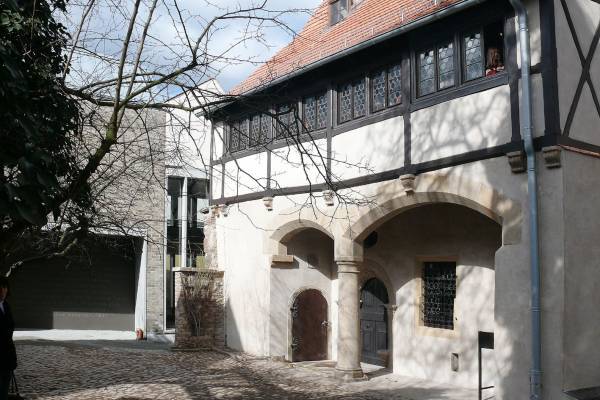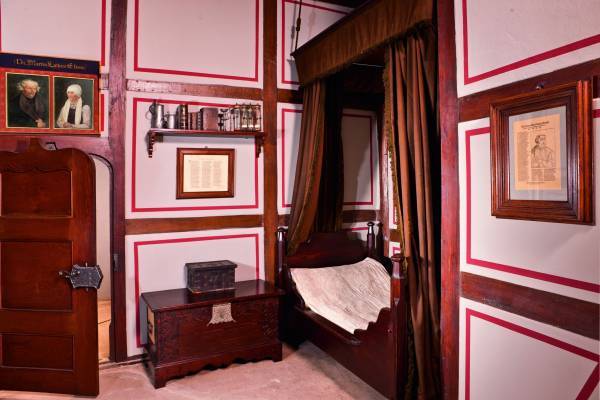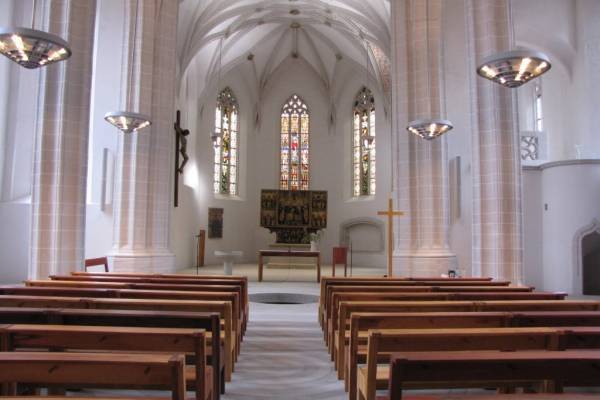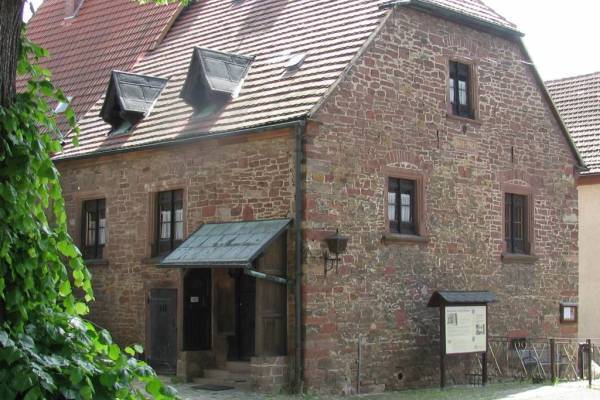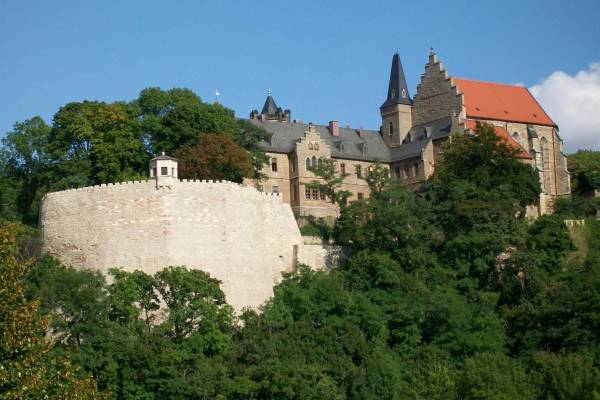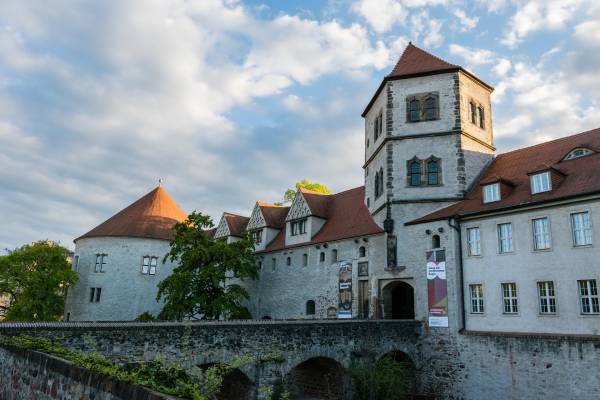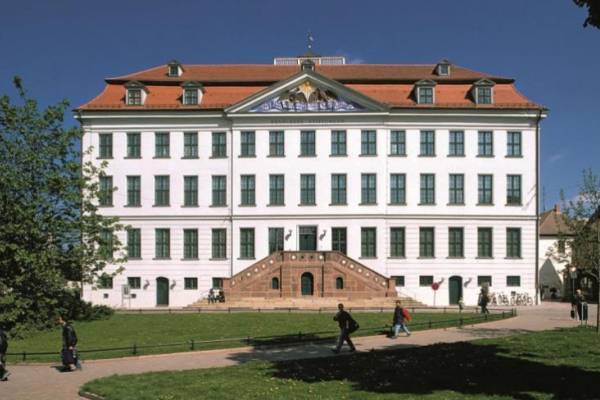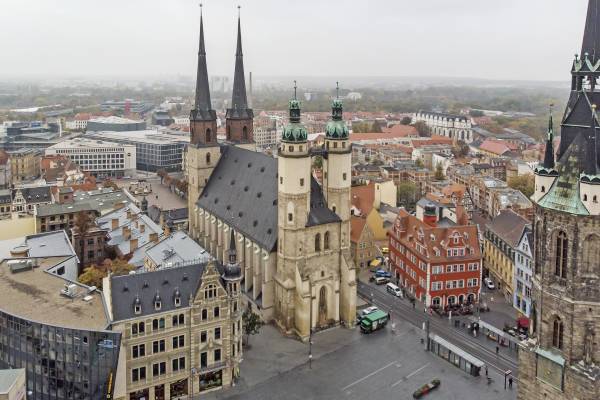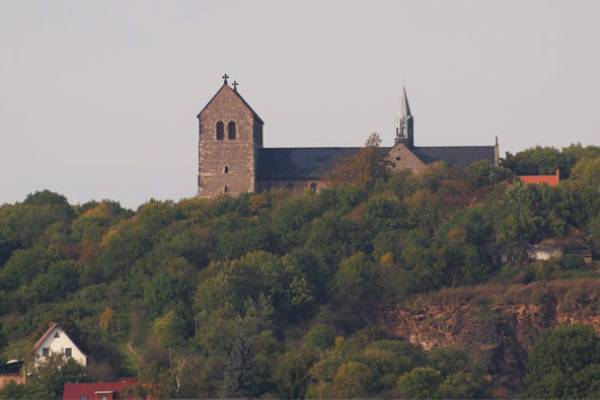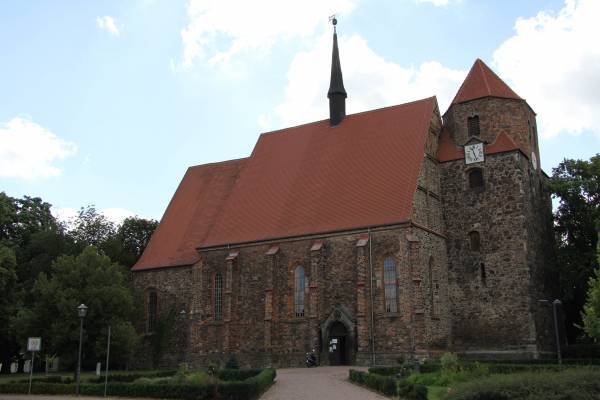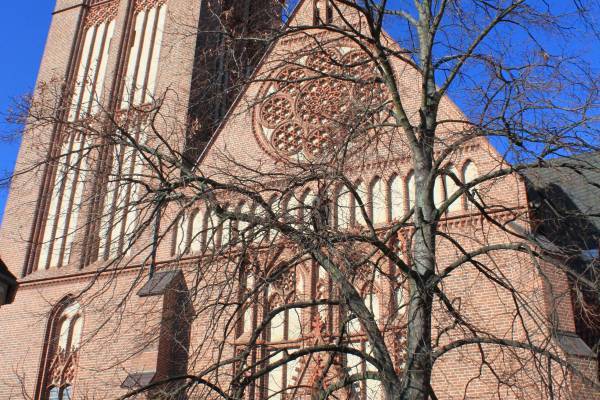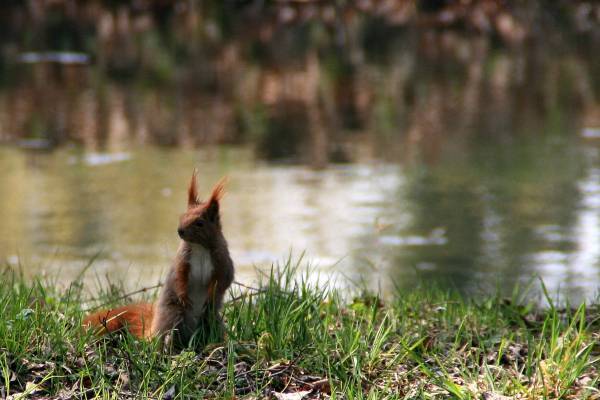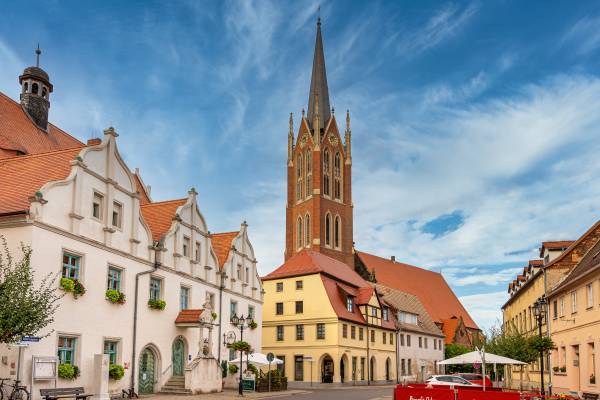World Heritage Cycling to Luther
The route
Cycling is the perfect way to move between the regional sites connected with Luther. Instead of riding along the pilgrimage route, cyclists can use nearby bike paths, biking from Lutherstadt Wittenberg on the Elbe cycle path via Coswig (Anhalt) and Wörlitz to Dessau-Roßlau. Here, cyclist can choose the Fläming route via Zerbst to Walternienburg, to join the Elbe path again. Now it goes uphill to Aken and via Euro-Route R1 west to Köthen und Bernburg. The Saale cycle route connects the two towns of Bernburg (Saale) and Halle (Saale). A brief detour on the Saale-Harz cycle route takes cyclists to Eisleben and Mansfeld Lutherstadt.
Back in Halle (Saale), the only non-signposted section runs in an easterly direction through southern Anhalt. Despite the slope, we recommend a ride up the Petersberg. Now the route continues through rural areas to Bitterfeld to the Lake Goitzsche (Großer Goitzschesee). Bitterfeld is a junction of several supra-regional cycle routes, such as the Goitzsche circular trail, , the cycle route Coal I Steam I Light I Lakes - Route and the Mulde route. The latter leads to the nearby spa town of Bad Schmiedeberg. The Berlin-Leipzig route traversing Düben Heath runs directly to a last site connected to Luther in Kemberg and finally back to Wittenberg.
Sights along the Luther Cycle Route
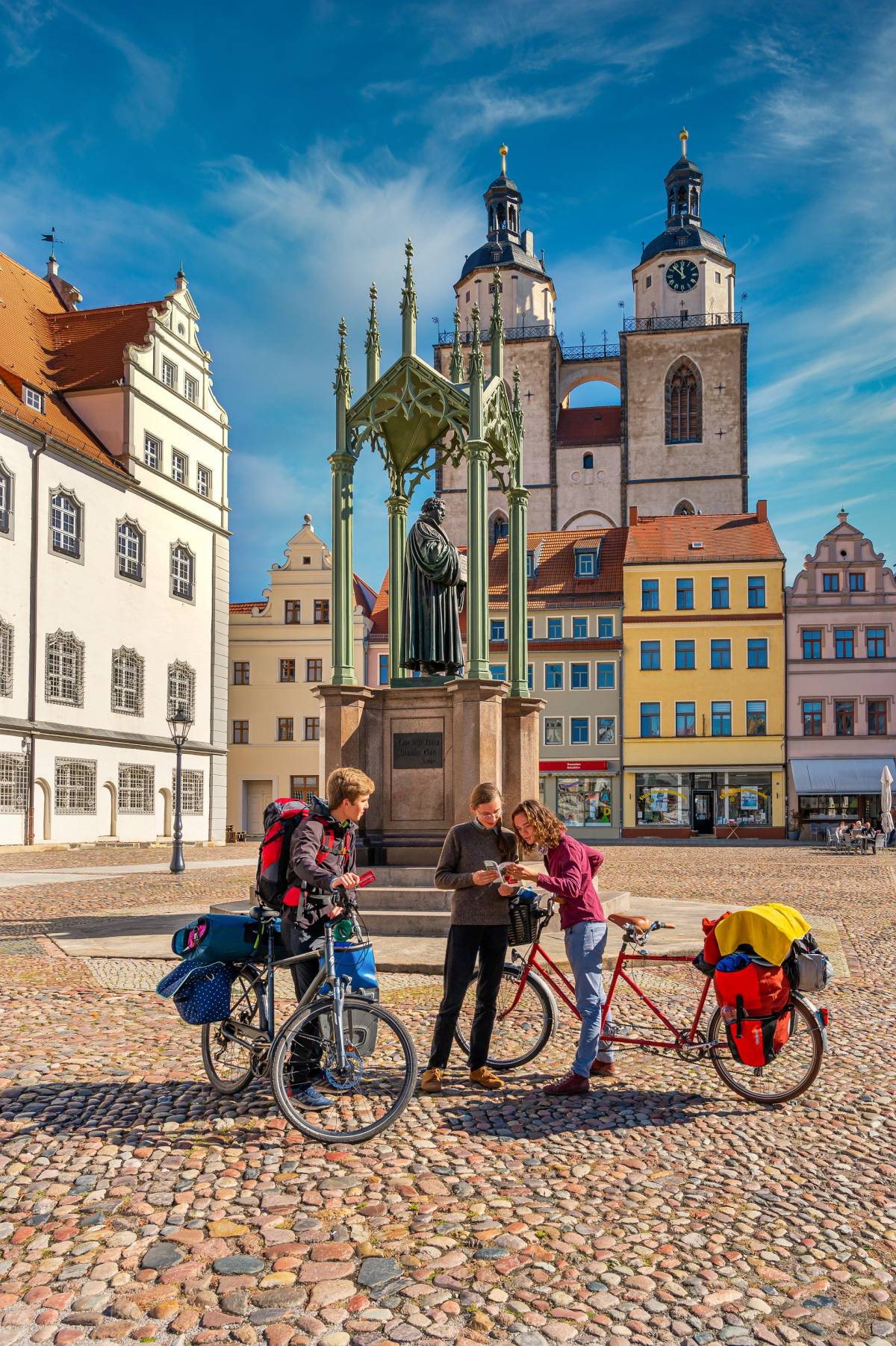
Lutherstadt Wittenberg
Even though Wittenberg was first mentioned in the 12th century, its upswing really only began when Elector Frederick the Wise had a residence built in the city around 1500. He then founded the university, attracting Martin Luther to the city. With his posting of the theses on October 31, 1517, Luther laid the foundation for the Protestant Church and made Wittenberg famous. To this day, you can experience world history at original Reformation sites.
Biosphere and Fläming
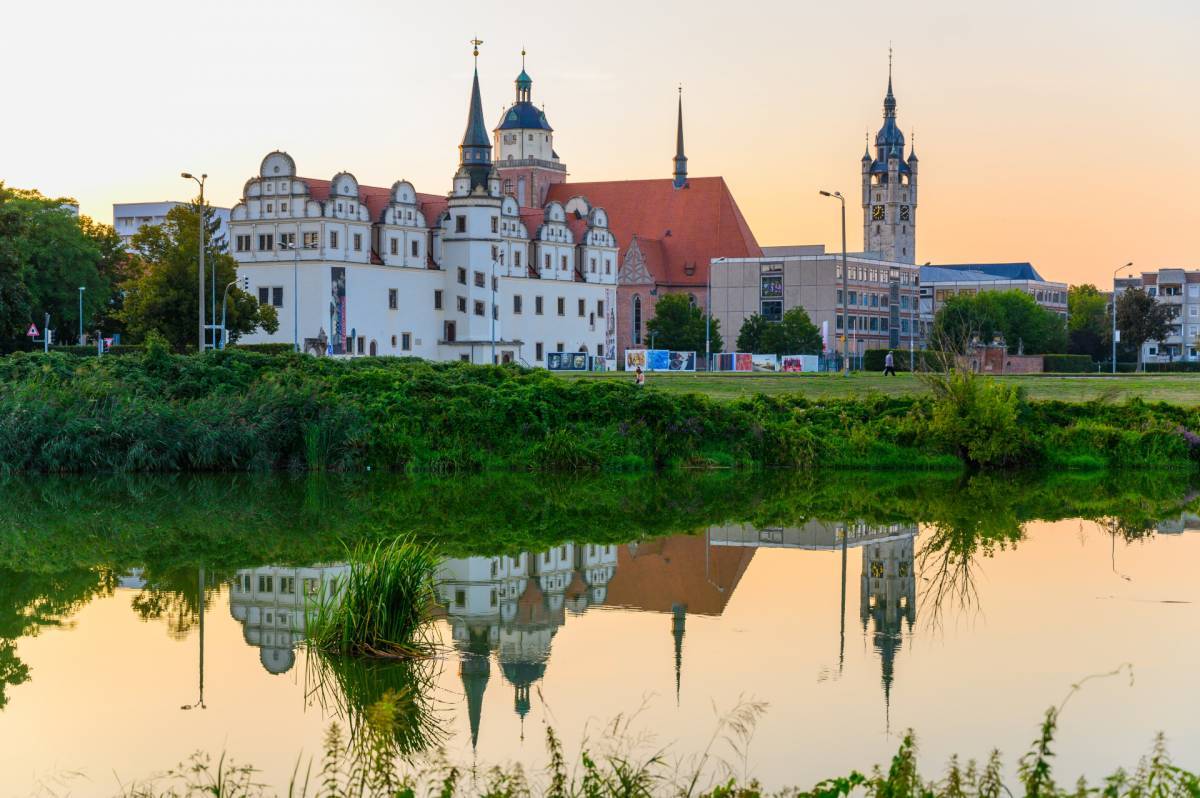
Dessau-Roßlau
Dessau once was the residence city of Anhalt, a principality of the 18th century with close ties to the Reformation. In 1534, the protestant Lord’s supper was celebrated in the local castle church, St. Mary. The same year saw the construction of the west wing (Johannbau) of the Dessau castle, visited by Luther on several occasions. Local developments of the 20th century contributed to Dessau’s fame. The Bauhaus, the Junkers aircraft factories and other industrial enterprises of the Wilhelminian period still characterize the cityscape.
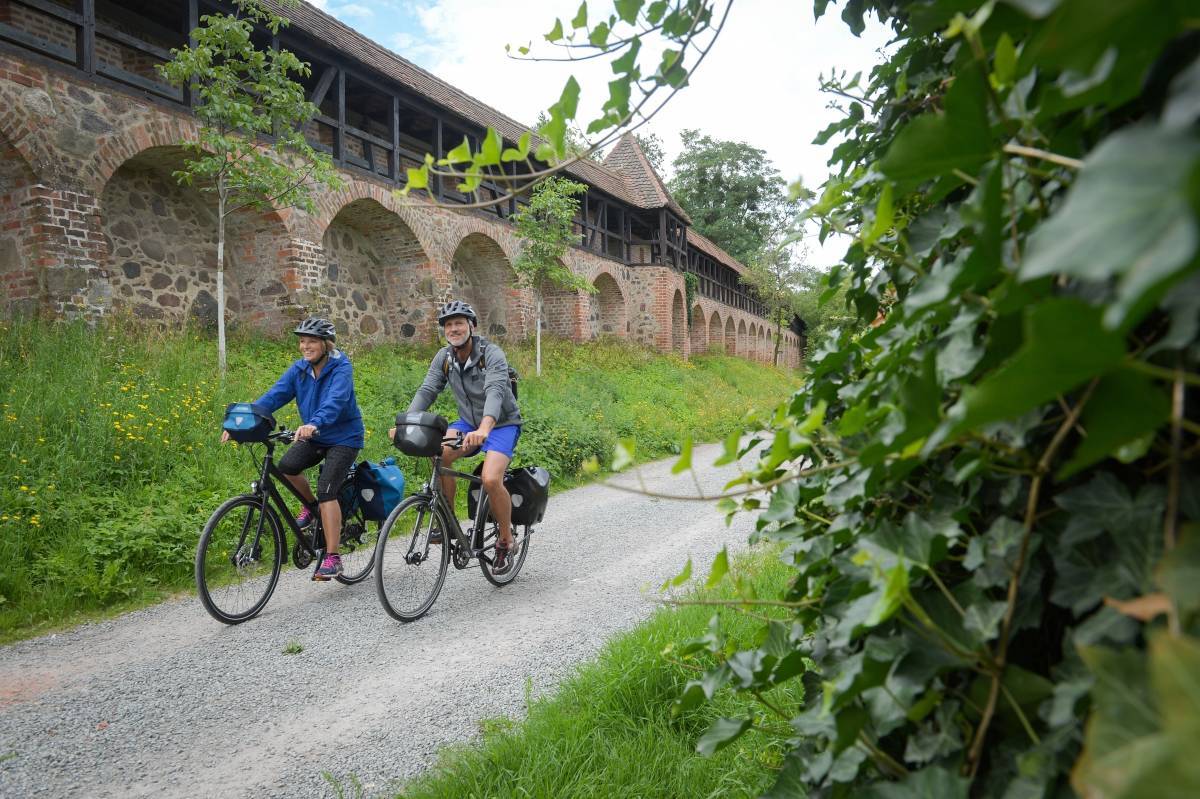
Zerbst/Anhalt
Zerbst looks back on an illustrious past as an important university and a royal seat. Hailed as the "decus et ornamentum totius Anhaltinatus" (adornment and toast of Anhalt), it was also an intellectual and theological center, as is obvious by its many churches, monasteries, chapels and other spiritual institutions.
Law and music
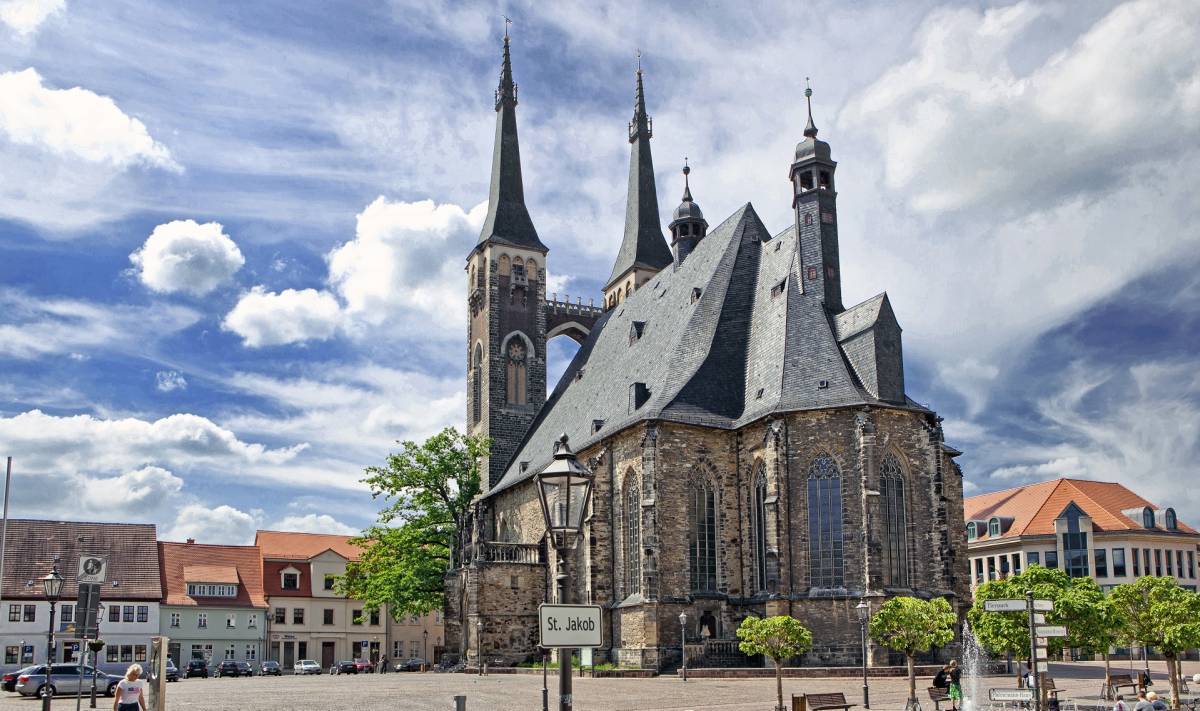
Köthen
The grand master of baroque music, Johann Sebastian Bach, the founder of modern homeopathy, Dr. Samuel Hahnemann, classicist architect Christian Bandhauer, Fröbel pedagogue Angelika Hartmann and many others spent creative years in Köthen. Prince Wolfgang, born in Köthen in 1492, introduced the Reformation in Anhalt-Köthen, making it the second state after Electoral Saxony to switch to the new religion.
Along the Saale
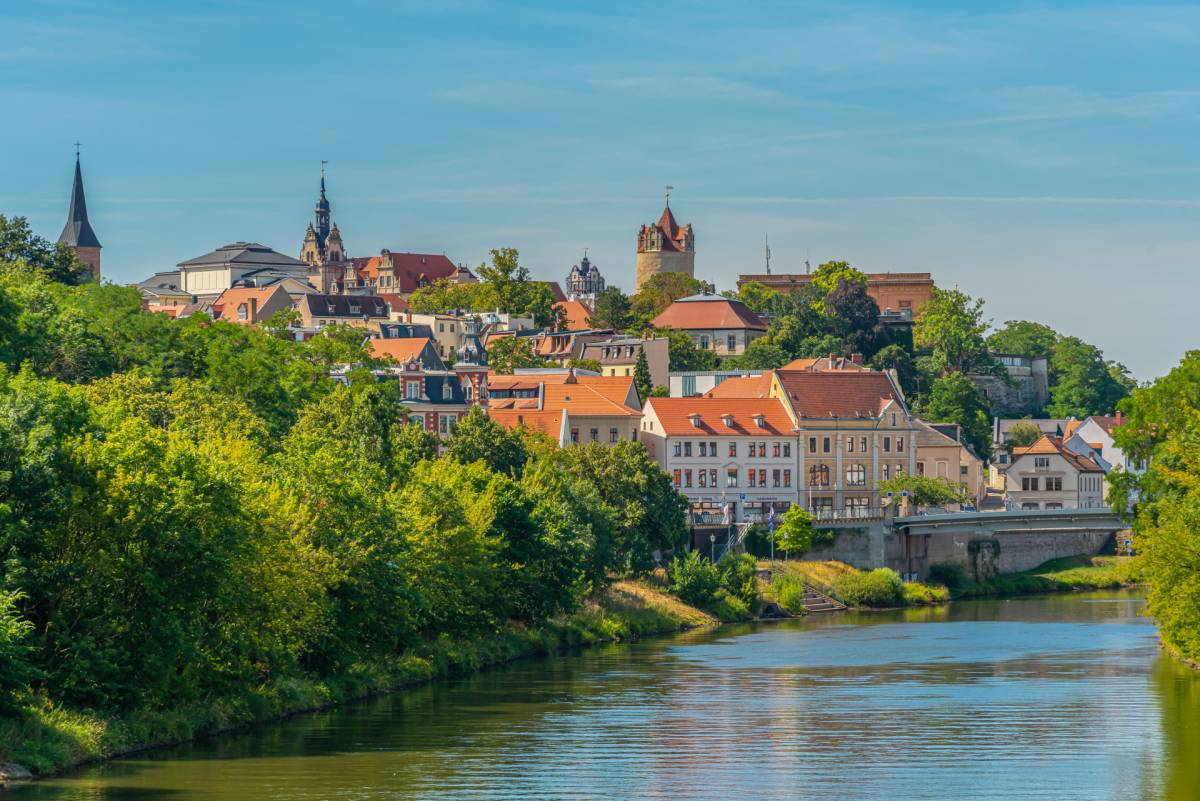
Bernburg
Bernburg was first mentioned in 961 as "civitas brandanburg". The Saale divides the city into a high and a low part. With time, a cultural and industrial center developed. The duchy of Anhalt-Bernburg existed until 1863. Many sights make the 1050-year history tangible.
Luther’s Bethlehem and Jerusalem
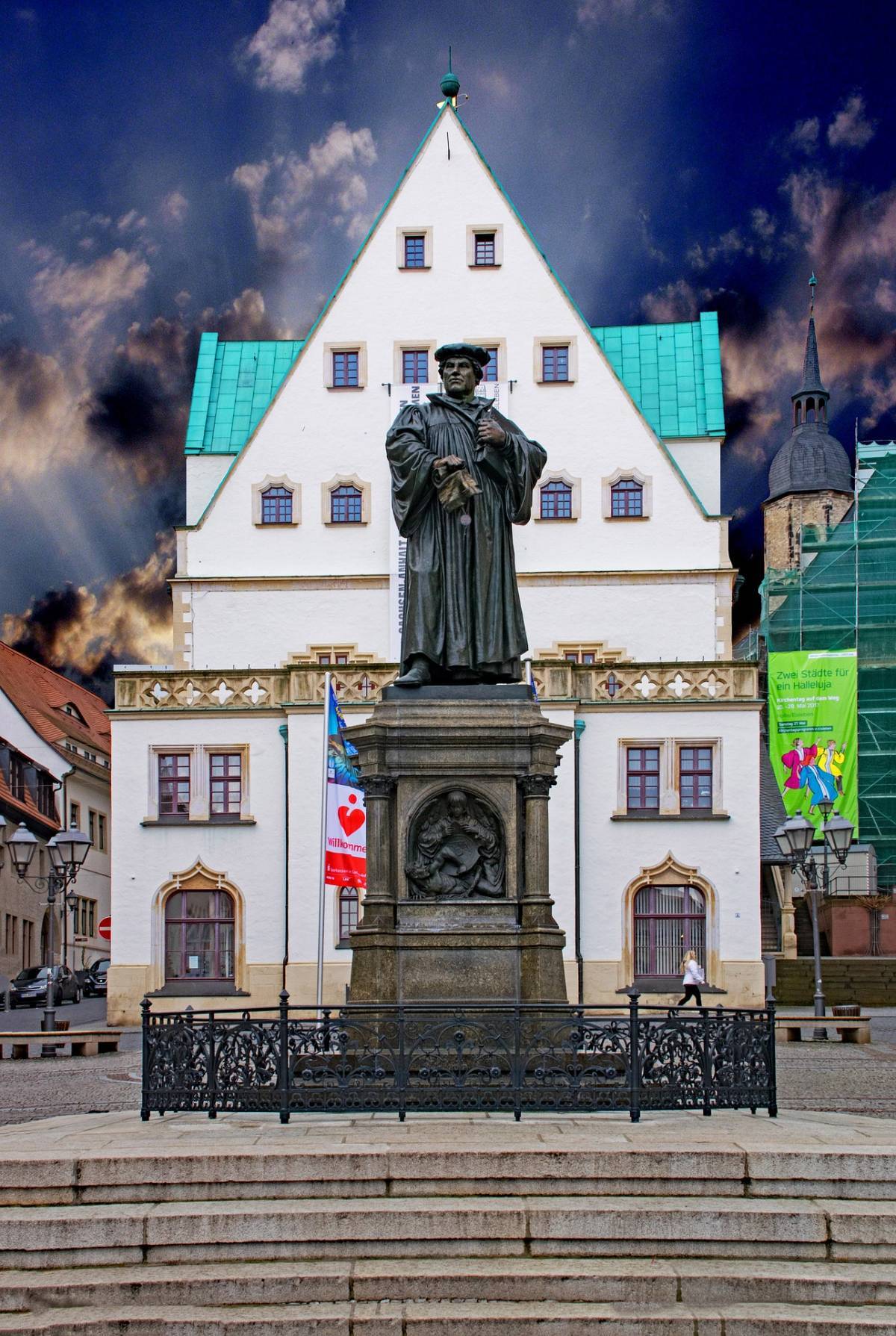
Lutherstadt Eisleben
Eisleben, nestled in the hilly landscape of the eastern foothills of the Harz Mountains, is the second largest town in the Mansfeld-Südharz district. As Martin Luther was born and died here, Eisleben is sometimes called Luther’s "Bethlehem and Jerusalem". In the 15th and 16th centuries, it developed into the most important town in the county of Mansfeld, whose wealth was mainly based on the mining and smelting of copper slate. The “Luther Trail Eisleben” (Lutherweg Eisleben) begins here, marking and connecting the Luther sites of Eisleben with 144 bronze "Luther roses" embedded in the pavement.
Mansfeld Lutherstadt
Mansfeld, about 35 km northwest of Halle (Saale), is also called "Mansfeld Lutherstadt," because Martin Luther spent a large part of his childhood and youth (1484-1497) in the town. The home of Luther’s parents, the school building and St. George’s are authentic reminders of his formative years.
Halle/northeastern Saale district
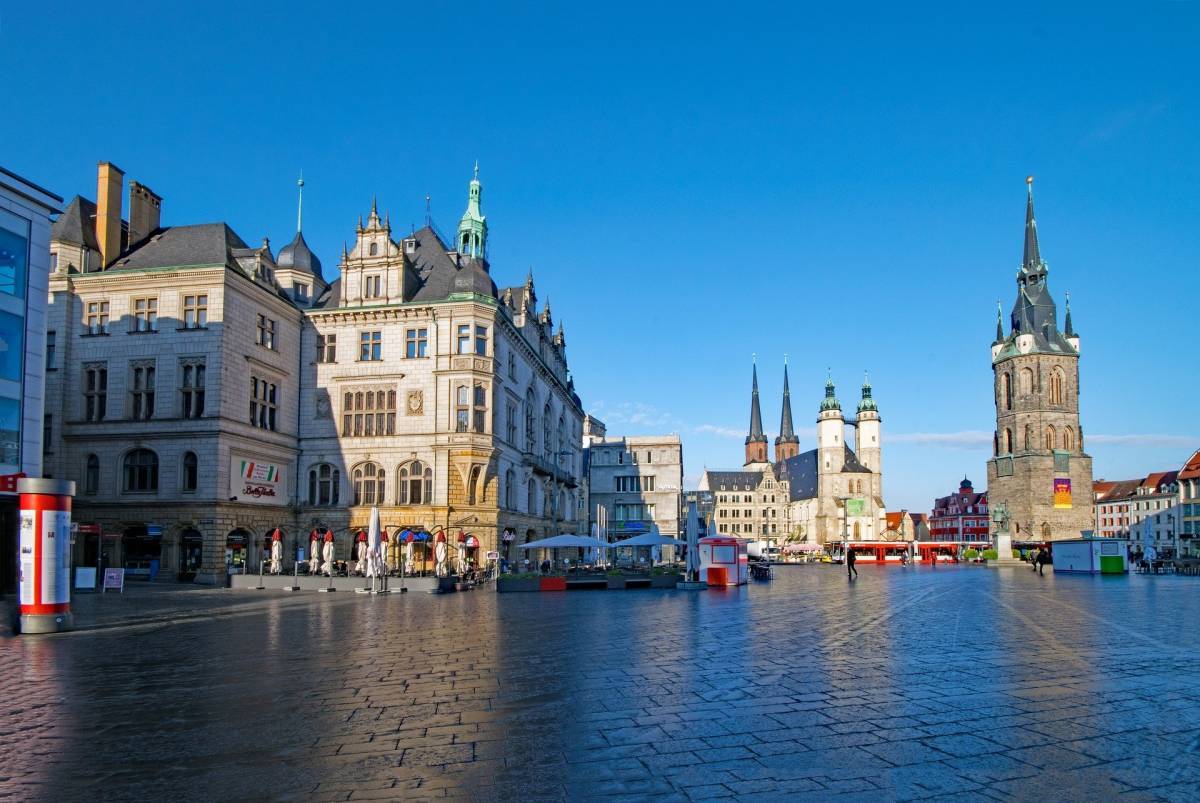
Halle (Saale)
Halle, one of the oldest cities in Central Germany, became wealthy thanks to salt mining. Famous museums such as the Moritzburg Foundation, the Handel House and the State Museum of Prehistory are located here. Halle is also a city of science. The local university was founded in 1694, and the Francke Foundations (Franckeschen Stiftungen), established in 1698, achieved global renown.
Industrial culture in the northeastern Saale district
Brehna is part of an ancient settlement area. The first traces of humans in the area date back to 7500 years ago. The sights of today’s village include the town and monastery church St. James Major and St. Clement, the post office column and two trestle windmills.
Bitterfeld was first mentioned as a Slavic settlement in 1224. In the Middle Ages, the village developed into a small rural town with crafts and agriculture. Later, in 1839, the town developed into a railroad junction due to the onset of lignite mining. At the end of the 19th century, AEG turned Bitterfeld into a hub of chemical industry.
Returning via the Düben Heath (Dübener Heide)
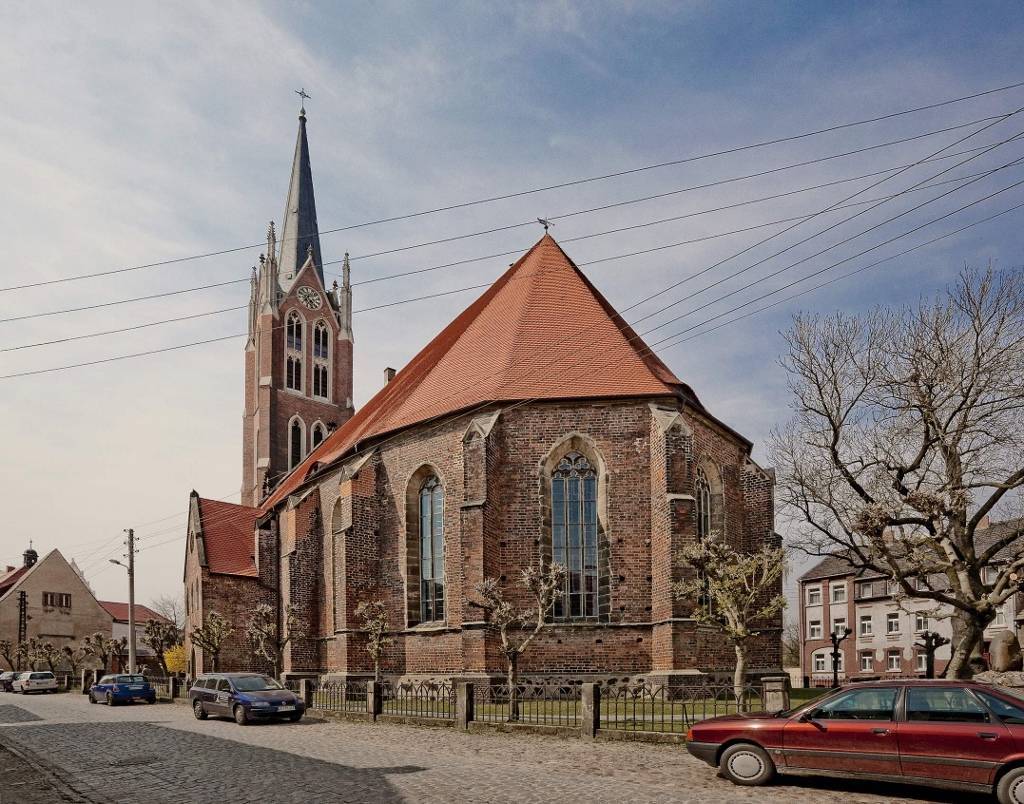
St. Mary’s
Kemberg played a significant role in Luther’s life. His friend, the Kemberg provost Bernhardi, was the first local priest to enter the state of marriage in 1521. He also founded the Protestant presbytery. A plaque and a stone bench commemorate the fact that the congregation placed Luther’s coffin in the church. The church once had an altar made by Lucas Cranach the Younger, but only a wing showing the reformers has survived a past fire.
